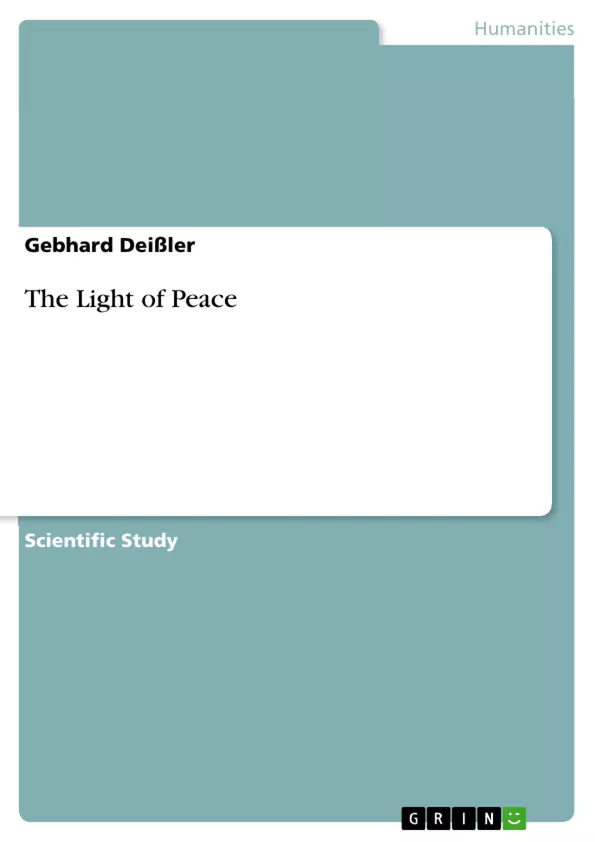In 1970, when East and West were about to meet and to possibly invalidate the historical assumption formulated by the British p
oet Rudyard
Kipling, according to which such meeting of Eastern and Western minds was impossible, a Japanese by the name of Itsuo Tsuda, who brought with him the knowledge that would not only enable the meeting between East and West, but even that of humanity as a whole, discretely settled in Paris. In his person Sino-Japanese thought converged and merged into something new that our age greatly needed and continues to do so in the foreseeable time. I would like to call it the art of converting war into peace.
Inhaltsverzeichnis (Table of Contents)
- The Messengers of Peace From the East
- Orient and Occident: East-West Synergy
- Conquest and Ownership of and Leadership from the Innermost Centre. Cultural Approaches to Peace and Human Integration
- Interview with Dr. Francisco Barahona Riera, Rector of the University of Peace of the United Nations: Si vis pacem para pacem vs. si vis pacem para bellum.
Zielsetzung und Themenschwerpunkte (Objectives and Key Themes)
This work aims to explore the convergence of Eastern and Western thought, particularly the role of Japan in fostering peace and human unity in diversity. It investigates how Japanese culture and philosophy, informed by a historical commitment to peace, contribute to a global understanding of transcultural management.
- The role of Japan in promoting peace and human unity
- The convergence of Eastern and Western thought
- Transcultural management principles and their application
- The significance of inner peace and self-reflection for achieving global peace
- The impact of cultural approaches on achieving peace and human integration
Zusammenfassung der Kapitel (Chapter Summaries)
Chapter 1: The Messengers of Peace From the East
This chapter introduces the concept of a "messenger of peace" from the East, focusing on the Japanese figure of Itsuo Tsuda. Tsuda's work is positioned as a bridge between Eastern and Western perspectives, offering a unique approach to promoting peace and human unity. The chapter emphasizes the historical commitment to peace enshrined in Japan's constitution, specifically Article 9, and explores the connection between this commitment and the Japanese pursuit of inner peace.
Chapter 2: Orient and Occident: East-West Synergy
This chapter delves deeper into the potential of East-West synergy in fostering peace and understanding. It likely explores the specific philosophies and cultural values that contribute to this synergy, highlighting the potential of bridging cultural divides through shared goals and perspectives. The chapter might discuss the unique contributions of both Eastern and Western cultures to a more peaceful and united world.
Chapter 3: Conquest and Ownership of and Leadership from the Innermost Centre. Cultural Approaches to Peace and Human Integration
This chapter examines the concept of leadership and its connection to peace and human integration. It likely explores the influence of cultural values and perspectives on leadership styles and their impact on achieving peace. The chapter might investigate the role of inner peace and self-reflection in fostering effective leadership and promoting cultural understanding.
Schlüsselwörter (Keywords)
The primary keywords and concepts within this work are: transcultural management, peace, human unity, East-West synergy, Japanese culture, leadership, cultural approaches, inner peace, and self-reflection. These themes encompass the core focus of the work, exploring the role of cultural perspectives and values in fostering peace and promoting effective transcultural management.
- Quote paper
- D.E.A./UNIV. PARIS I Gebhard Deißler (Author), 2013, The Light of Peace, Munich, GRIN Verlag, https://www.hausarbeiten.de/document/214682


